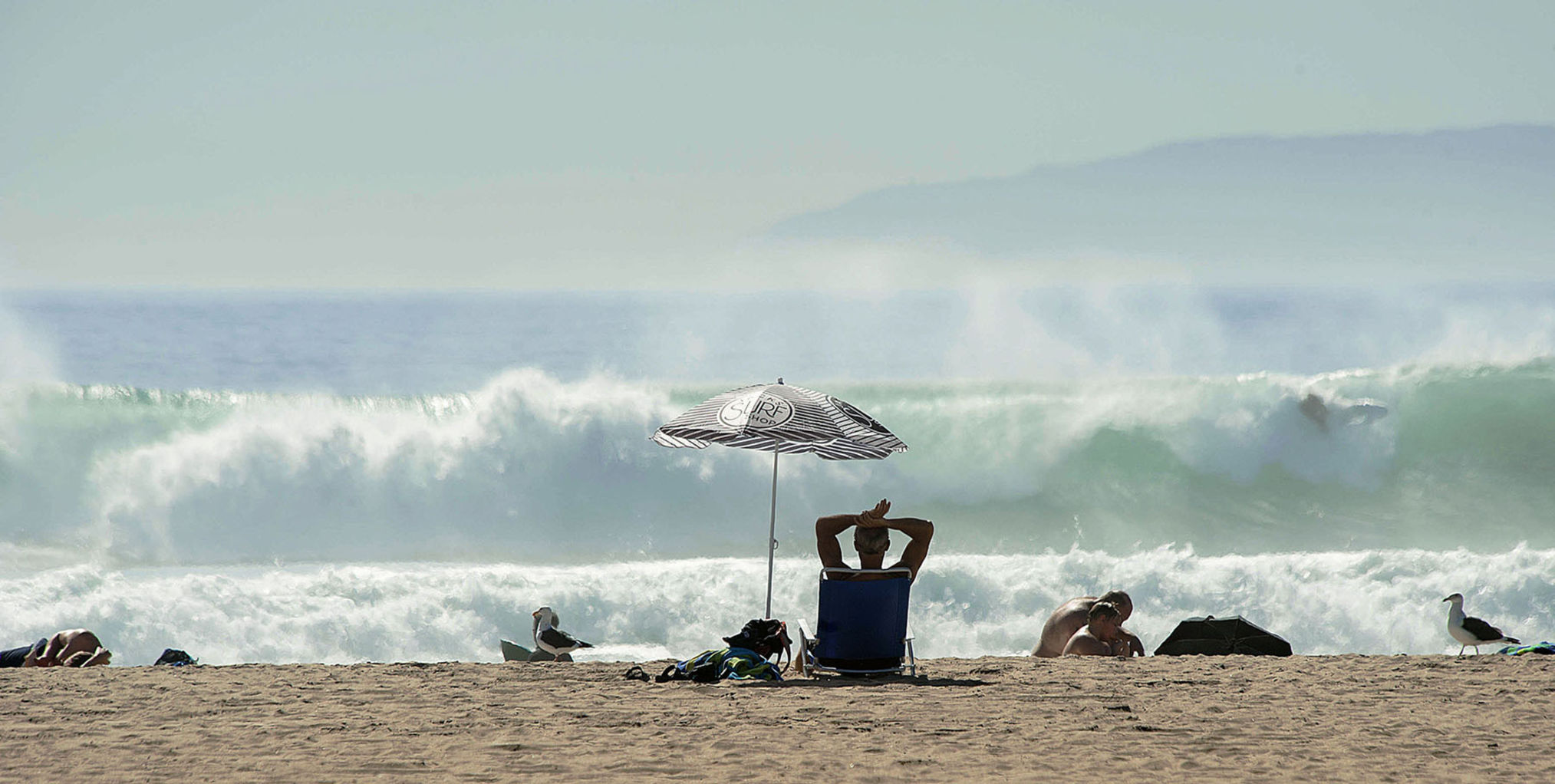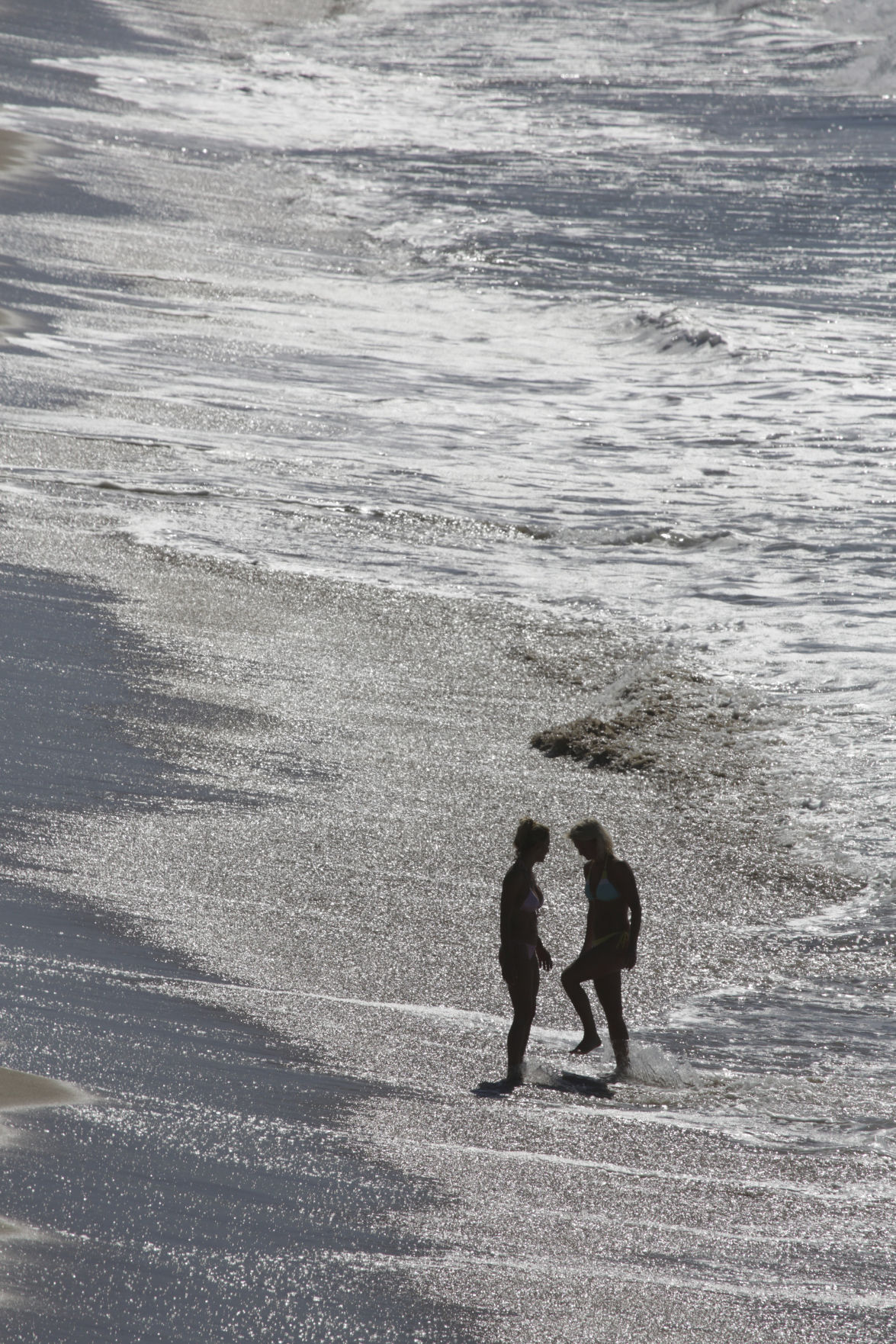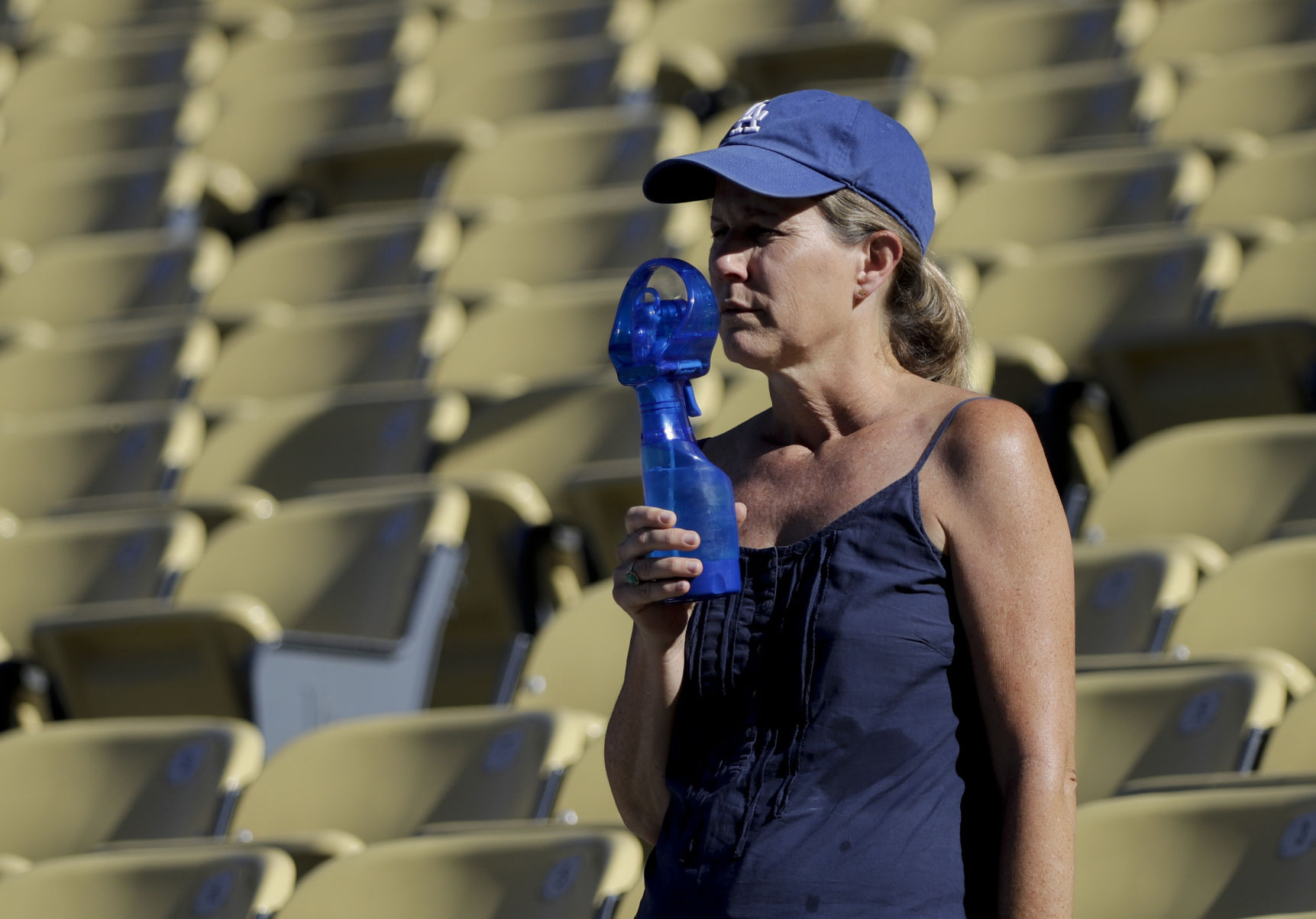LOS ANGELES (AP) — Southern California’s fall heat wave broke more records Wednesday but with less intensity despite the persistence of high pressure over the West. Downtown Los Angeles reached 100 degrees in the early afternoon, surpassing the date’s old
LOS ANGELES (AP) — Southern California’s fall heat wave broke more records Wednesday but with less intensity despite the persistence of high pressure over the West.
Downtown Los Angeles reached 100 degrees in the early afternoon, surpassing the date’s old record of 96 set in 1983 but behind the pace of heating that sent the mercury soaring to a record 104 a day earlier.
Triple-digit highs were less widespread than Tuesday although there were plenty of readings in the high 90s, including at normally balmy beaches.
The hot, dry Santa Ana winds that pumped up temperatures and fire danger in the region this week were losing strength but forecasters warned that isolated strong gusts were still possible and critical fire weather conditions would last through the evening.
“Though signs of decline are evident since this time yesterday, a ridge of high pressure remained in control over the western U.S.,” the San Diego weather office wrote. “Cloud free skies prevailed from San Francisco to San Diego to Denver.”
In a significant improvement from Tuesday, firefighters across the region were not scrambling to corral wind-driven blazes to keep them from being whipped into major wildfires. All those fires remained relatively small and were in substantial stages of containment.
In Los Angeles, the temperature for the evening’s first pitch of Game 2 of the World Series was predicted to be 94, well below the 103 degrees the Dodgers and Houston Astros had to deal with 24 hours earlier.
The high pressure was expected to weaken on Thursday and allow cooling, but daily highs will remain above normal for the rest of the week, forecasters said.
Santa Ana winds can occur any time of year in Southern California but are common in the fall and have been involved in spreading destructive wildfires.
The winds, which blow from the interior out to sea, push back the normal cool and moist onshore flow from the Pacific, drying out vegetation as relative humidity levels plunge.





